On the Road is a weekday feature spotlighting reader photo submissions.
From the exotic to the familiar, whether you’re traveling or in your own backyard, we would love to see the world through your eyes.
This week we’re finish up the Amsterdam trip (thank you Captain C) and starting a new adventure with frosty!
(click the image below for a bigger, non-blurry version of this week’s schedule.)
Albatrossity
As many of you have suspected for a while, birders are weird. Many of them obsessively keep lists of birds seen anywhere (life list), birds seen in their yard, birds seen in a particular county, birds seen pooping (shit list), birds seen on heard on live TV shows, birds seen in their dreams, etc.
One of the more common manifestations of this obsession is keeping a list of the first bird heard or seen in a New Year. I don’t subscribe to all of these obsessions, but I do keep track of the first birds seen in a New Year, and so here is a post with some images of those birds from the past 10 years. Most of these images are not the actual individuals I saw or heard on January 1 of those years, since it is usually pretty dark at the time of the actual sighting or hearing. But these are good memories nonetheless!
PS: Happy MLK Day! And if you didn’t get a wall calendar for Christmas,, to help keep track of holidays and birthdays and such, you can still order one at reduced prices this week. After that, they will be retired and the year will roll on regardless.
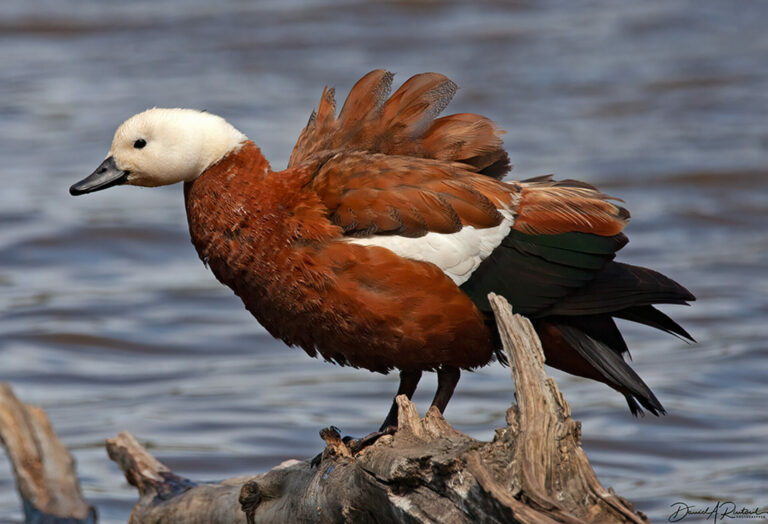
In 2015 we happened to be in Wellington, New Zealand on January 1, and my first bird (heard, not seen at the time) was a New Zealand endemic species, the Paradise Shelduck (Pūtangitangi, or Tadorna variegata). This is a noisy and gorgeous species, with conspicuous differences in the plumage of male and female birds. The white head marks this one as a female. Learn more here, and click here for a larger image.

In 2016 we were again in New Zealand, in the cozy village of Okarito on the windswept west coast of the South Island. I woke up to the song of the Tui (Prosthemadera novaeseelandiae), a common forest and garden bird of NZ. The video is noisy because our cottage was about 200 yds from a rocky beach, but it was a lovely song in a lovely setting. Learn more here, and click here for a larger image.
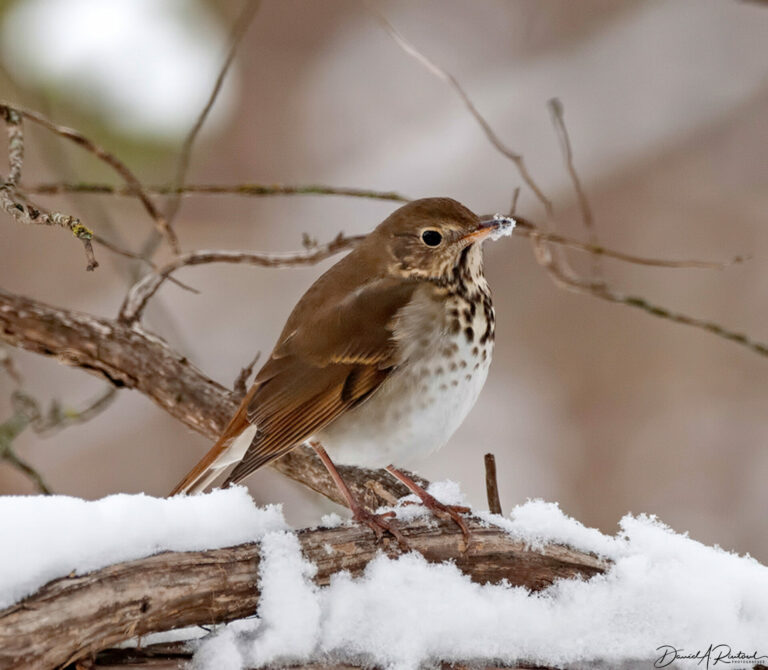
In 2017 we were back in a more mundane setting, at home in Flyover Country, far from South Pacific beaches and Gondwanaland birds. But the first bird of that New Year was one of my all-time favorites (and it might be Elizabeth’s absolute favorite), a Hermit Thrush (Catharus guttatus). It was not singing, alas. Learn more here, and click here for a larger image.
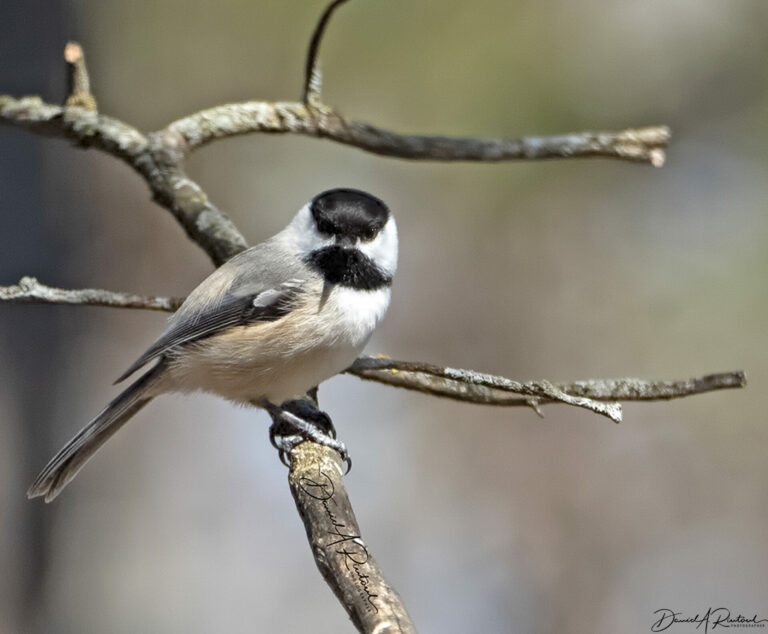
2018 also found us back in Flyover Country for the New Year, and my first bird was a very typical resident of our backyard, a Black-capped Chickadee (Poecile atricapillus). These agile sprites entertain us here year-round, and make sure that we never let them run out of bird seed! Learn more here, and click here for a larger image.
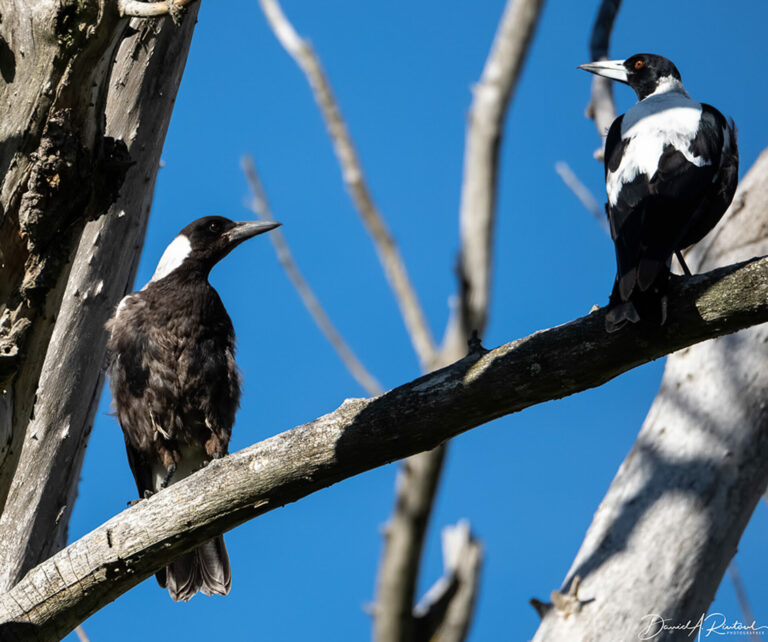
New Years Day 2019 dawned clear and cool at Lake Heron Station on the South Island of New Zealand. The cacophony of a family of Australian Magpies (Makipai, or Gymnorhina tibicen) greeted me as I went out to greet the sun and watch it rise over the crest of the Southern Alps. These birds are not closely related to our Black-billed Magpies, but are related to the butcherbirds and currawongs. Learn more here, and click here for a larger image.
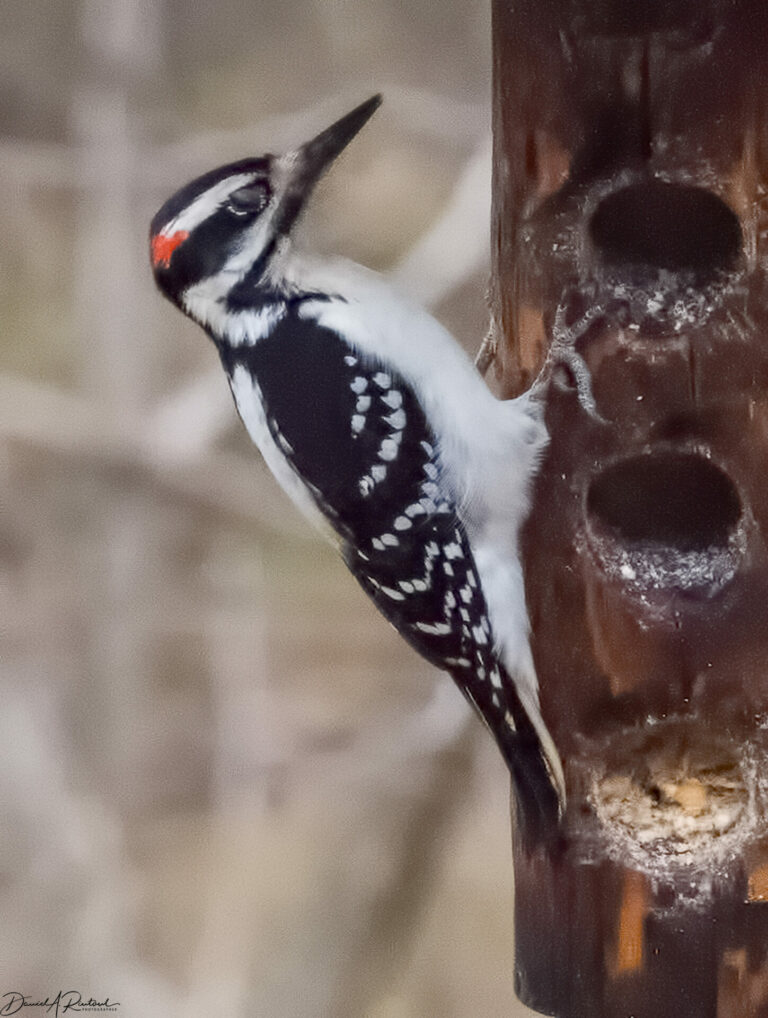
After 2019 we did not travel overseas, so the rest of these will all be North American species. The distinctive call of a Hairy Woodpecker (Dryobates villosus) greeted me as I made coffee on New Years Day 2020. Not a common bird here, but we do have a pair that reside in the woods behind the house, and it was a good bird to start the New Year with. Learn more here, and click here for a larger image.
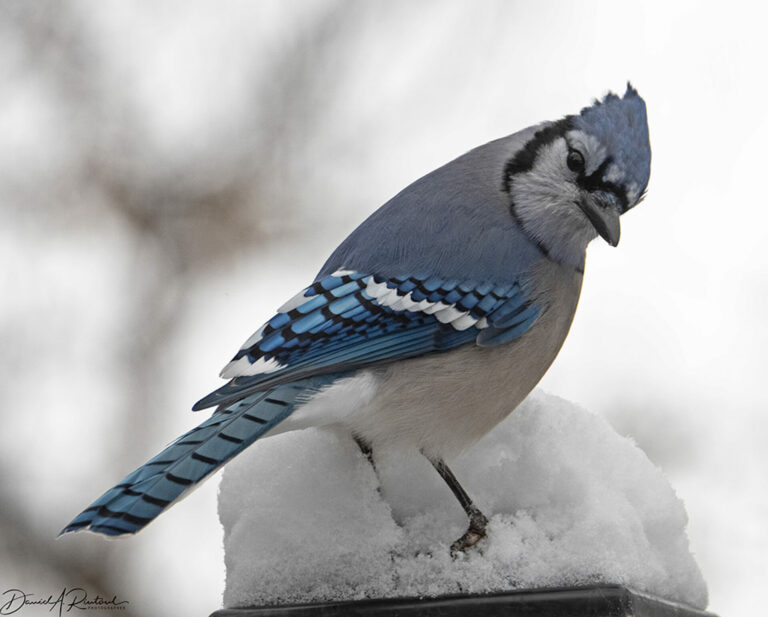
On Jan 1, 2021 we were still reeling from the events of the previous year, awaiting vaccination anxiously, and had yet to learn about the depths to which TFG would stoop in order to retain power on J6. A charming corvid, the Blue Jay (Cyanocitta cristata), called out in the dawn hours on that day, and thus started my species list for the year. Learn more here, and click here for a larger image.
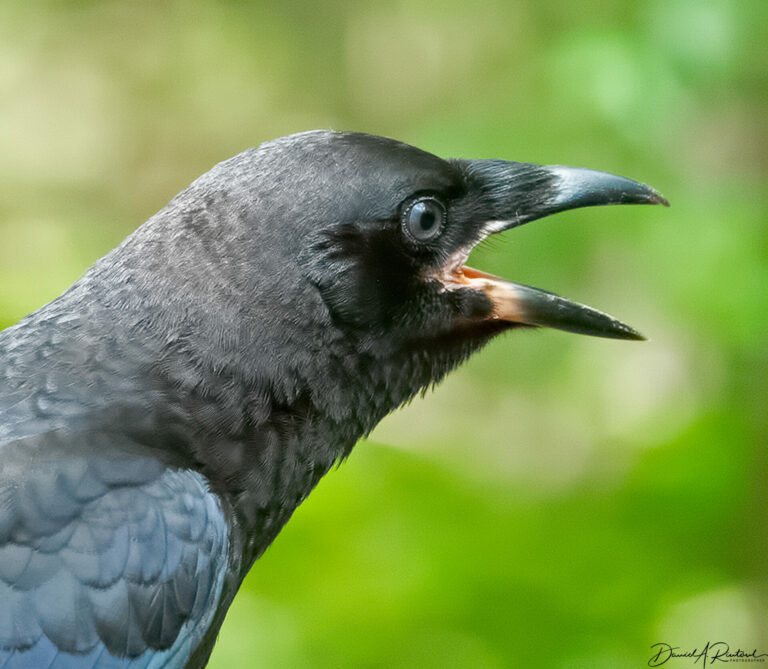
Another corvid made the list the next year. In some years we have a lot of American Crows (Corvus brachyrhynchos) in the neighborhood, and in those years, it is unusual if you don’t hear one first thing in the morning. This is a youngster, with the pale blue eyes and pale gape that add a dash of color to these otherwise monotonic birds for the first few weeks of their life. Learn more here, and click here for a larger image.
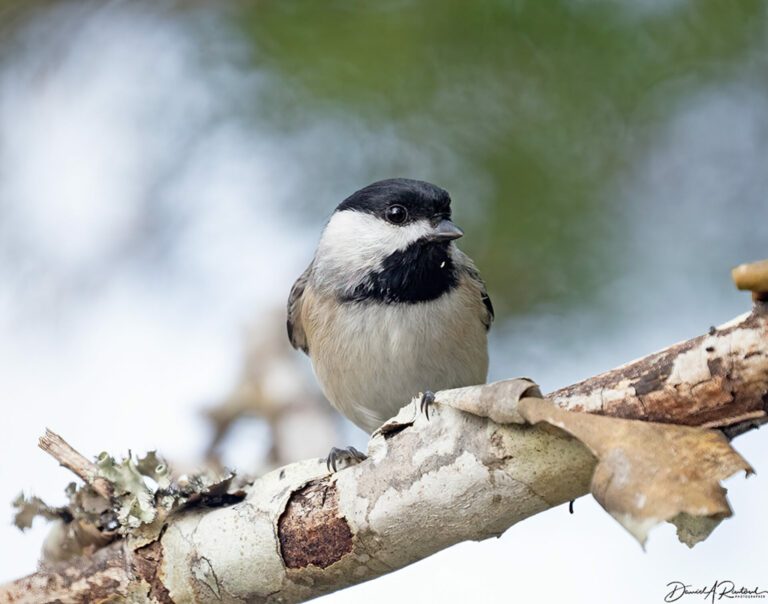
In 2023 we started the New Year away from Flyover Country for the first time in a few years, visiting my brother and sister-in-law in North Carolina. They have some different birds, and one of those, a Carolina Chickadee (Poecile carolinensis), sounded off in the pre-dawn light of January 1, 2023 there. Learn more here, and click here for a larger image.

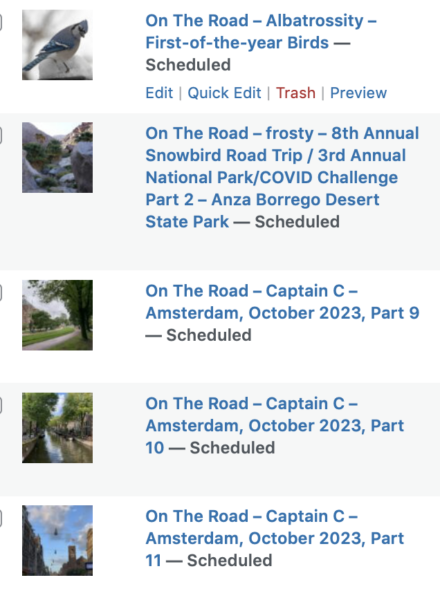
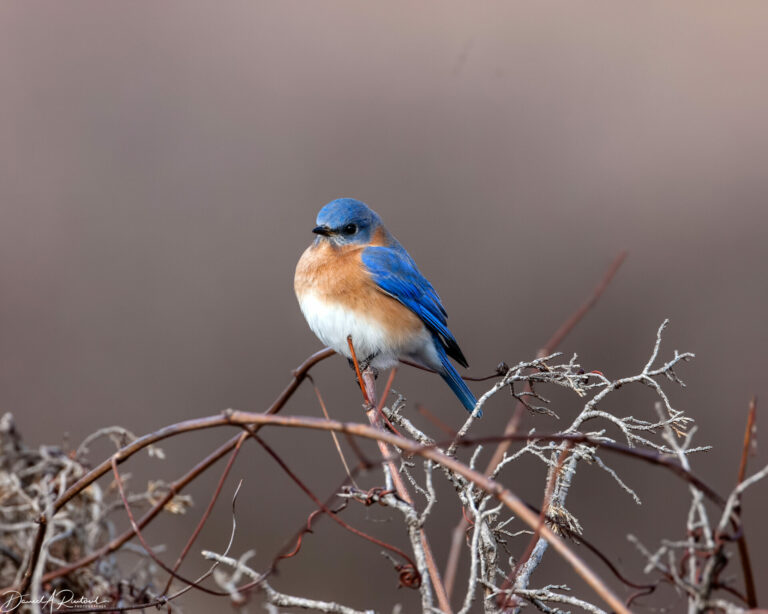
eclare
The Eastern Bluebird is definitely an auspicious start to 2024!
Don
“May the bluebird of happiness fly up your nose.”
Monday is Albatrossity and Peter King’s MMQB (not called that anymore). That’s the way I start my week.
sab
I had no idea that there are different kinds of chickadees.
sab
@sab: The chickadees all look a lot alike. And the carolina and blackcapped have little range overlap, accept in N Ohio where I live. There it’s a total overlap.
Princess
Hermit Trish is definitely one of my favourites too.
Spanky
@sab: If you can tell the difference in the pics, you’re better than i am. It’s when they open their mouths that the difference becomes obvious.
I was”t aware of a different species either when I moved from PA to MD, so when I first heard the Carolina here it was a real what-the-hell moment.
SteveinPHX
Love the photo of the hairy woodpecker. Remember first differentiating this from the Downy. It’s the beak!
Thank you as always!
mvr
Thanks for these! I like the Hermit Thrush as well, though the whole Eastern Bluebird image is striking as well.
OzarkHillbilly
The birds are eating me out of house and home in this week of single digit highs. I obviously don’t mind the hordes crowding my bird feeders. I finally figured out a way to mount a squirrel baffle on the big feeder and it is nice to see the piglets relegated to the ground, scavenging for whatever the birds knock off.
mvr
@OzarkHillbilly: We’ve managed to keep squirrels out of our feeders with baffles, decent “squirrel proof” feeders, and strategic hanging of feeders. So they sit on the ground below the sunflower feeders and get fat. So fat that they can no longer climb along the underside of a branch and so fat that they sometimes bounce off the tree trunk when they leap to it. So they entertain us and I no longer regard them as our enemies.
And then the fox shows up and they are too slow to run away and I feel somewhat sorry for them, even while I admire the foxes.
Albatrossity
@OzarkHillbilly: Single-digit highs would be fine with me right now; we’ve had a few days of negative-digit highs. That’s not my idea of high…
Our squirrels are many, chubby, and very persistent. Keeping them off the feeders is possible, but on these cold snowy days I scatter seed on the deck for the juncos, goldfinches, and sparrows as well. The piglets hoover that up and look around for more…
evap
Thanks for another inspiring post! Looking at birds always cheers me up. The Hairy Woodpecker looks a lot like the Downy Woodpecker that visits my feeder frequently, although with a longer beak.
The birds here are very hungry right now. I need to get more feeders!
munira
I love the photo of the hermit thrush in the snow. When i had my cabin in Quebec, there was a hermit thrush that sang so beautifully right outside my door, but i could never see him – he was a real hermit.
Chat Noir
When is a bird a birb?
Lovely pix as always!
Albatrossity
@Chat Noir: Thanks! And thanks for the link to the bird/birb discussion. A good read!
StringOnAStick
I opened the curtain yesterday in the subzero temperature to see a mourning dove shivering under the feeder, trying to pick seeds out from under the deep snow. I cleared a spot under each feeder and have been tossing fatty seeds there for the ground feeders each day. I hope they get through our last predicted single digit low tonight.
A group of varied thrush have taken up residence in the area and visit often. I’d never seen one close enough to identify until this year; I feel extra blessed that they like our yard.
frosty
@OzarkHillbilly: I hung a seed feeder yesterday. First visitor was a squirrel hanging upside down. Must have spilled a lot of seeds because the juncos were scavenging underneath it.
Neither squirrels nor birds have been back today – maybe they know that snow is in the forecast? Or maybe they don’t like the location. I had a suet feeder out for so long that the suet went moldy. My attempts to be nice to the birds aren’t working as intended. :-(
way2blue
New Zealand seems a lure—aye? I’m currently in Rarotonga where all the locals have the very cool New Zealand accent. There is an endemic bird here, a flycatcher, but I’m told the conservation area isn’t open for tours right now. Alas.
Albatrossity
@way2blue: Great place to be! Here it is 3°F and snowing….
Islands have (or had) a lot of endemic species, floral and faunal. The Roratonga Flycatcher/Monarch is one of those back-from-the-brink success stories — nearly extirpated by rats, relict population discovered, intensive and continuing efforts to expand the population and move some birds to rat-free islands, etc. The New Zealanders are good at that, and have lots of practice…
Enjoy the tropical weather!
A woman from anywhere (formerly Mohagan)
@sab: and there are chickadee relatives in England called Tits (I kid you not). Also small, cute, friendly, and visit feeders.